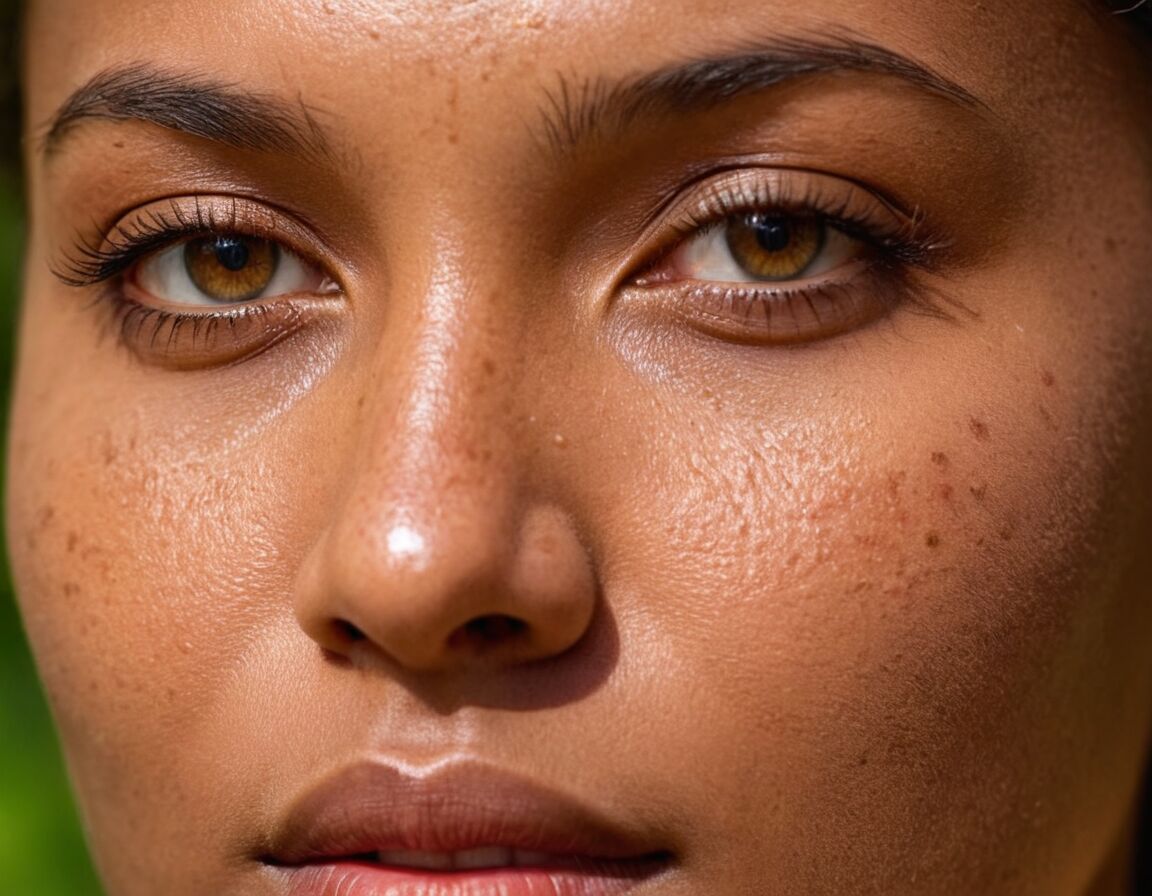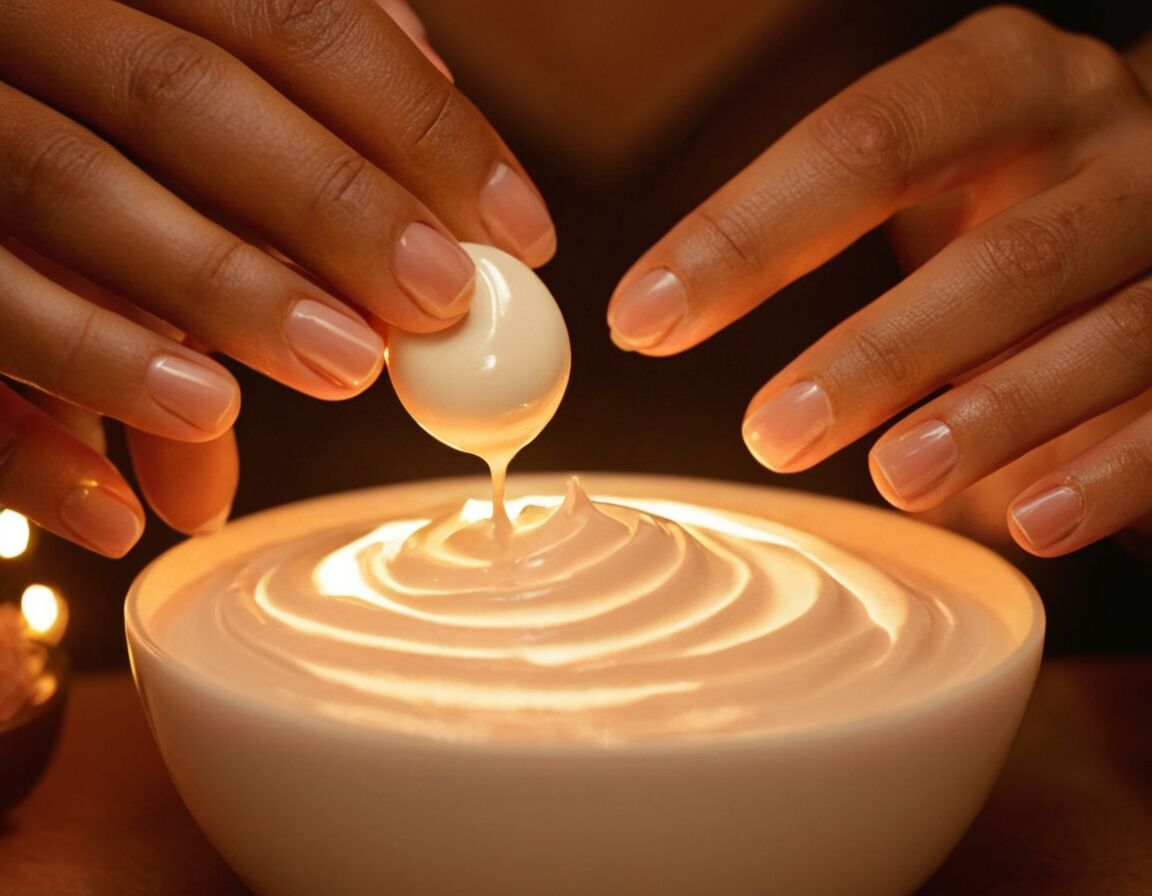De hyperpigmentation meme has rapidly gained popularity across various social media platforms, sparking widespread attention and discussion. Its viral nature highlights how images and messages can influence public perceptions of skin health in a short period of time. As the meme spreads, it also raises questions about accurate information versus exaggerated claims, underscoring the importance of critical evaluation online. Understanding both the origins and impact of this meme is crucial for fostering better awareness and encouraging healthy conversations around skin conditions.”
Belangrijkste opmerkingen
- The hyperpigmentation meme spread rapidly on social media, raising awareness but also causing misconceptions.
- Many believe hyperpigmentation is only caused by sun damage or aging, which is misleading.
- Social media helps educate but also spreads false remedies and exaggerated claims about skin treatment.
- Misinformation can lead to harmful practices, like using unverified products or DIY remedies.
- Critical thinking and professional advice are essential for accurate understanding and responsible skin health management.
Origins and viral spread of the meme
The hyperpigmentation meme originated on social media platforms such as TikTok and Instagram, where users began sharing images and personal stories related to skin discoloration. Its initial spread was often fueled by influencers and beauty enthusiasts who aimed to raise awareness about hyperpigmentation, sometimes accompanied by dramatic visuals that exaggerated the effects for attention. These posts quickly gained traction, leading to a viral cascade as more individuals started participating, sharing their experiences, and creating variations of the meme.
What contributed significantly to its rapid proliferation was the combination of relatability and visual impact. Hyperpigmentation is a common issue faced worldwide, but many people lack proper understanding or confidence discussing it openly. The meme offered an accessible way for users to connect over shared challenges while also encouraging curiosity among those unfamiliar with the condition. Furthermore, algorithm-driven content recommendation systems amplified exposure by pushing popular posts into wider audiences, thereby increasing the meme’s visibility across diverse online communities.
While some posts provided educational facts, others relied heavily on humor and exaggeration. This mixture helped propel the meme beyond niche health discussions into mainstream social media conversations. As a result, the meme became not only a form of entertainment but also a catalyst for broader discussions about skin conditions and the importance of accurate information online.
Nuttige links: De ultieme gids voor het perfecte, taps toelopende blow-outkapsel
Common misconceptions about hyperpigmentation

Many misconceptions about hyperpigmentation persist due to misinformation spread through social media and anecdotal advice. A common misunderstanding is that hyperpigmentation results solely from sun exposure or aging, but it can also be caused by inflammation, hormonal changes, or certain medications. People often believe that any dark spots on the skin are permanent, when in fact many types of hyperpigmentation can fade with appropriate treatment and care.
Another misconception concerns the use of home remedies. Some assume that natural products like lemon juice or baking soda can effectively lighten dark patches; however, these substances may irritate the skin or worsen discoloration rather than improve it. It is crucial to approach skin treatments cautiously and consult healthcare professionals for personalized advice rather than relying on online myths.
- Mislabeling different skin conditions: Hyperpigmentation is sometimes confused with other issues such as melasma, age spots, or post-inflammatory marks. Understanding the specific cause of pigmentation is important for selecting proper treatment options.
- Belief that all hyperpigmentation is dangerous: Many think that this skin change indicates a serious health problem, although most cases are benign and cosmetic. Nonetheless, persistent or unusual discoloration should always be evaluated by a dermatologist to rule out underlying health concerns.
The role of social media in awareness campaigns
Social media plays a crucial role in shaping awareness campaigns related to skin health, including hyperpigmentation. Platforms such as Instagram, TikTok, and Twitter allow individuals to share personal stories, experiences, and educational content that reaches a broad audience instantly. The visual nature of these platforms enhances the impact of before-and-after images, infographics, and short videos, making complex information more accessible and engaging for viewers.
Influencers and healthcare professionals actively contribute by creating content that dispels myths and provides accurate guidance. Their large follower bases help disseminate important messages quickly, often reaching demographics that may not typically seek out medical advice. As users engage with this content through likes, comments, and shares, discussions become more normalized around topics once considered taboo or stigmatized, such as skin discoloration issues.
This interactive environment enables real-time feedback and fosters community support. People can ask questions, access expert opinions, and find reassurance from others experiencing similar challenges. Consequently, social media transforms into an effective tool for raising awareness, promoting understanding, and encouraging proactive skin care practices among diverse audiences.
The only way to do great work is to love what you do. – Steve Jobs
Impact on public understanding of skin health
The widespread sharing of hyperpigmentation-related content on social media has greatly influenced the public’s understanding of skin health. As a result, more individuals are becoming aware of different skin conditions and their possible causes. However, this increased exposure can be a double-edged sword, as misinformation or exaggerated claims may lead to misconceptions about treatment options and severity.
On one hand, these platforms often serve as valuable sources of support and education. Stories from others experiencing similar issues help normalize discussions around skin concerns that were previously stigmatized or rarely addressed openly. When influencers, dermatologists, or trusted organizations share accurate information, it encourages responsible skincare practices and helps demystify complex medical topics.
Conversely, the rapid spread of unverified advice can foster fear and confusion among those seeking solutions. People might fall for quick fixes or home remedies with little scientific backing, risking adverse reactions or worsening their condition. Public perception becomes shaped not only by factual data but also through viral content that sometimes prioritizes entertainment over accuracy. This underscores the importance of promoting trustworthy sources and critical thinking when engaging with skin health discussions online.
Diepgaande inzichten: De opkomst van de moderne mul: Een nieuwe trend voor de fashionista's van vandaag
| Aspect | Beschrijving |
|---|---|
| Origins and viral spread | The meme started on social media, spreading rapidly through influencer shares and engaging visuals that amplified both awareness and exaggeration of hyperpigmentation issues. |
| Common misconceptions | Misunderstandings include beliefs that hyperpigmentation is solely caused by sun exposure, that all dark spots are permanent, or that home remedies are always effective, which can lead to improper treatments. |
| Role of social media | Platforms facilitate awareness by enabling personal storytelling, visual education, and dissemination of professional advice, which can both inform and mislead depending on the source. |
| Impact on public understanding | While increasing awareness and normalizing skin concerns, social media also risks spreading misinformation, emphasizing the importance of critical evaluation of online content. |
| Scientific facts vs. exaggerations | Accurate information emphasizes proper diagnosis and treatment, while memes may exaggerate effects for entertainment, potentially leading to misconceptions. |
| Risks of misinformation | |
| Promoting accurate education | Sharing verified information, expert opinions, and educational resources online helps combat myths and fosters responsible skincare practices. |
| Future trends | Growing emphasis on transparent, evidence-based discussions and increased collaboration between healthcare professionals and social media creators. |
Scientific facts versus meme exaggerations

Online discussions about hyperpigmentation often blur the lines between scientific facts en meme exaggerations, which can lead to misunderstandings. While some content provides accurate information backed by dermatological research, other posts tend to amplify effects or offer misleading claims for entertainment or sensationalism. For instance, memes that suggest simple remedies or quick fixes without scientific validation may encourage unsafe practices.
It is important to recognize that hyperpigmentation can have various causes, including hormonal fluctuations, inflammation, or sun damage. Proper diagnosis and treatment typically require consultation with specialized healthcare professionals who can interpret the underlying reasons accurately. Simplified statements or exaggerated visuals found in memes often overlook this complexity and tend to oversimplify the issue, creating false expectations.
Educational content rooted in scientific evidence emphasizes effective, evidence-based treatments like topical therapies or procedures performed by experts. Conversely, meme-driven depictions may focus on dramatizing the impact of pigmentation or promoting unproven home remedies. Such exaggerations can sometimes exacerbate conditions or foster skepticism towards legitimate medical advice. Thus, engaging critically with online information helps ensure responsible decisions and fosters a realistic understanding of skin health.
Diepgaande inzichten: De culturele betekenis van Tralalero Tralala in de moderne muziek
Risks of misinformation and harmful practices

Misinformation surrounding hyperpigmentation can lead to harmful practices that negatively affect skin health. Many online claims promote quick fixes or unproven remedies, which may sound appealing but often carry risks. For example, advice suggesting the use of harsh chemicals or abrasive home treatments like lemon juice or baking soda can cause skin irritation, increased sensitivity, or even worsen existing discoloration.
It is also common for false information to encourage dangerous procedures without professional supervision. Attempting any invasive or chemical-based treatment based solely on online tips might result in unwanted side effects such as burns, scarring, or pigment irregularities. Such actions delay proper diagnosis and appropriate care from licensed dermatologists or healthcare providers.
- Self-diagnosis through unreliable sources: Relying on social media or anecdotal accounts can lead to misinterpretation of symptoms, which might mask underlying health issues requiring medical attention.
- Use of unverified products: Purchasing skincare products advertised as miracle cures without scientific backing often results in waste of money and potential skin damage.
Being cautious about these claims and consulting qualified professionals ensures safer outcomes. Educating oneself with accurate, evidence-based information helps prevent unintended consequences while supporting healthy skin management methods.
Promoting accurate skin care education online
Promoting accurate skin care education online is vital for fostering informed discussions and responsible routines. With vast amounts of information available, it is crucial to emphasize the importance of consulting trusted sources such as certified dermatologists, reputable medical websites, and recognized health organizations. Sharing evidence-based content helps combat misinformation that often circulates through social media snippets or unverified blogs.
Creating engaging yet factual educational materials, including infographics, expert interviews, and detailed articles, can make complex topics accessible even for those unfamiliar with dermatology. When online influencers or healthcare professionals prioritize transparency and clarity, they empower the audience to distinguish between myths and scientifically supported advice. This approach encourages individuals to adopt safe, effective skincare practices grounded in proven methods.
Furthermore, promoting critical thinking skills among users enables audiences to evaluate information more carefully before applying treatments or sharing images. Responsible dissemination of knowledge also involves emphasizing the value of professional consultation for persistent or severe skin concerns. Ultimately, a focused effort on spreading trustworthy content fosters healthier habits, prevents harm from misguided remedies, and supports overall skin health awareness across digital platforms.
Future trends in skin health discussions
Future trends in skin health discussions will likely focus on transparency and evidence-based information. As the online environment continues to evolve, there is an increasing push for verified sources and expert-led content to shape public understanding. This shift aims to minimize the spread of misinformation and promote responsible sharing of knowledge by encouraging collaborations between healthcare professionals and social media creators.
Additionally, personalized skincare solutions are expected to become more prominent. Advances in technology, such as artificial intelligence and skin analysis apps, allow individuals to receive tailored advice suited to their specific conditions. These tools can support users in making informed choices, especially when combined with input from licensed practitioners. Enhancing digital literacy remains a key goal in this area, helping audiences critically evaluate information before acting on it.
Furthermore, there will be a growing trend towards interactive educational formats—such as webinars, live Q&A sessions, and virtual consultations—that facilitate real-time engagement. Such approaches foster a deeper understanding of skin health topics while also providing channels for direct questions and personalized guidance. Overall, future discussion landscapes aim to empower individuals with trustworthy, accessible, and understandable resources, emphasizing safe practices and ongoing education about skin care advancements.
FAQ: Uw vragen beantwoord
What are the main causes of hyperpigmentation?
Can hyperpigmentation be completely cured?
Are there any preventive measures for hyperpigmentation?
Does hyperpigmentation pose any health risks beyond appearance?
Are there specific skin types that are more prone to hyperpigmentation?
Referenties:










